Your Guide to Nitro Coffee Systems
The craft beverage is more approachable than ever, but you’ll have some equipment choices to pore over.
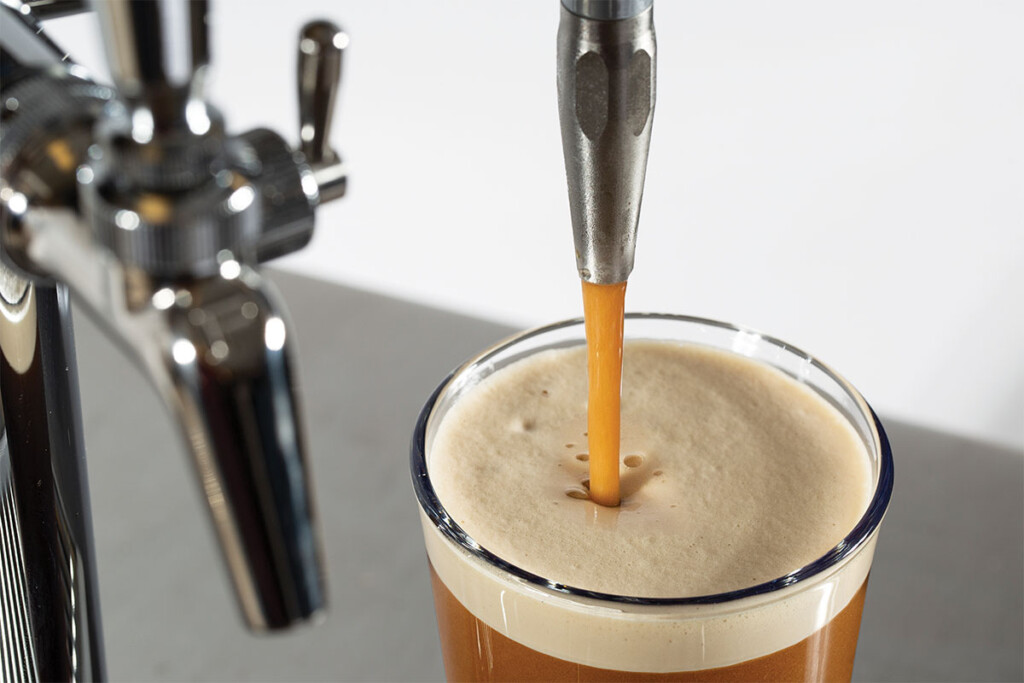
Whether jet black and piping hot, sweetened and chilled, foam-adorned or somewhere in between, coffee, in its many forms, is a beverage of choice for many.
American adults drink about 516 million cups of coffee a day, according to the National Coffee Association’s Spring 2025 National Coffee Data Trends report, released in April. During a select week in January 2025, 9% of consumers ages 25-39 reached for a nitro coffee, notes the NCA.
The velvety drink, much like a Guinness stout in appearance, marries nitrogen with cold brew coffee—either from concentrate, purchased kegs or house-brewed kegs—for a lively, customizable beverage. From dawn to dusk (think an espresso martini, carajillo or affogato), the offering can add a signature element to many a menu.
![Nitron bev draw logo on handle[74] Nitron bev draw logo on handle[74]](https://www.fermag.com/wp-content/uploads/2025/09/Nitron_bev_draw_logo_on_handle74.jpg)
Cabinet temperature and gas ratio contribute to nitro coffee’s signature cascade. Courtesy of Bunn.
Get Moving
Nitro coffee setups have evolved with the times. Gone are the days of rolling a keg on the floor to infuse nitrogen or charging kegs in the walk-in for three to four days, suggest manufacturers. Today, operators can swiftly and seamlessly infuse nitrogen in-line as they dispense the on-tap beverage. Depending on the unit, gas can be delivered in one of three ways: via a nitrogen tank, a nitrogen generator (typically more popular in the beer world) or a food-safe air compressor.
While drink prep is more straightforward than it once was, there are still plenty of pre-purchase equipment considerations. Get started by looking at the following:
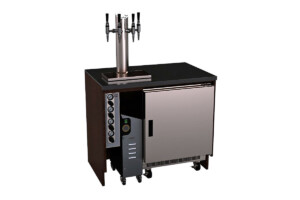
Multiple taps can unlock added beverage variety, including still cold brew and nitro coffee, lemonade, tea and more. Courtesy of Wunder-Bar.
Volume. For higher-volume operations, a keg system may be best, suggests one maker. One company’s keg unit holds two 2½-gallon kegs in a 24-inch-wide cabinet, whereas another maker’s countertop unit stows two 1-gallon concentrate bibs or two refillable containers in a 10-inch-wide footprint. Not all units boast set capacities, but at least one is rated to dispense one 16-ounce drink per minute for one hour before the drink starts to warm. “You need a very cold liquid in order for nitrogen to work,” notes the maker. Some units also allow an operator to offer, say, nitro cold brew as well as standard cold brew (a beverage sought by 18% of consumers polled by the NCA in January). A second tap also could offer tea, lemonade or other select beverages; you just don’t want to mix up the lines. One maker’s unit boasts four taps, each of which can dispense a still or nitro beverage. Consider if you would benefit from the beverage variety, or if two or more taps offering nitro cold brew would be more beneficial. Once you estimate your daily volume, you can better match your needs with a right-sized system and more.
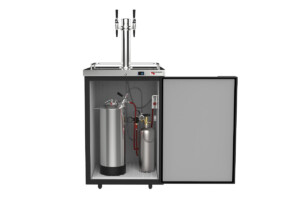
A bar setup for a direct draw unit can provide added theater and, in some instances, might power menu items across all dayparts. Courtesy of Micro Matic.
Location. Do you have a small slice of back-of-house countertop space to spare? Are you looking to add theater to a bar? Or is self-service of interest? “Some systems are purpose-built for high-volume environments, while others cater to smaller spaces or self-serve stations,” says one maker. As a workaround for tricky layouts, at least one company offers the option for cold storage and the dispensing tower to be up to 10 feet apart. In any case, ensure you have the appropriate water hookups and electrical requirements within reach. Beyond footprint, note neighboring equipment, minding a manufacturer’s clearance recommendations. “If it’s too close to a machine that’s generating heat, it can take that heat in, overheat and lead to component failure,” says one maker. Also, those making their own cold brew will need walk-in space for the keg storage. To that end, the maker of one two-keg system recommends buying four kegs for built-in product backup.
Budget. Makers urge operators to consider the product quality, brand reputation, warranty and other support behind a given unit’s price tag. “Originally, people are kind of driven by price, like, how do I get into this category quickly with the lowest investment?” says one maker. “But I think over time operators realize (the difference).” Also consider ancillary costs, such as your preferred purveyor’s concentrate, cold brew or beans. One maker’s engineer estimates it costs $4/gallon for their in-office cold brew. When a 12-ounce pour might sell for about the same price, your product can quickly earn its keep. At the same time, with tariffs, coffee costs are up, points out another maker. Self-brewing is more labor-intensive than using concentrate, and takes about 12-24 hours to complete.
The product also has a shorter shelf life (about two weeks if chilled and sealed, they say); food safety compliance marks another consideration. With either approach, ensure that your local distributor has reliable access to your product of choice. Nitrogen tanks, too, should be considered in life costs.
Finer Details
With those big-picture decisions aside, specifiers can turn to finer details. In that realm, manufacturers recommend paying attention to:
The gas. Some say a common error is to use CO2 vs. pure nitrogen; the former will alter the flavor and texture of the beverage. Be sure to use 100% food-grade nitrogen. Also, ensure your pressure settings match your desired pour; a professional installer can help troubleshoot. “Proper gas configuration is critical to achieving that signature nitro cascade,” one manufacturer notes. “Incorrect pressure can result in inconsistent pours, excessive foaming or flat drinks.”
The components. Checking that your unit has 304 stainless components marks another recommendation. “You would never want to use, say, for example, a tower that had been previously used for beer, because sometimes, if it’s an older one, it might have some brass or some 303 stainless in the faucet or in the connectors, and anything besides 304 is going to cause an off flavor in something as acidic as coffee,” says one maker.
The ingredients. Besides gas, be sure you already have or are specifying the appropriate water filtration system (at a minimum, suggests one maker, a carbon filter). In some instances, the OEM or service provider can check house water quality. Lastly, if you want to add milk to your cold brew, pour it in the glass rather than running it through the system, recommend makers.
The upkeep. Familiarize yourself and your staff with how often your unit needs to be cleaned and what the process looks like to ensure it stays in working order—and that your beverage quality stays high. At least one system boasts a semiautomatic cleaning program. Also ask potential partners about service and parts availability.
Final Say
As a final systems check, tap into your resources, be it your coffee roaster, peer operators, consultants or manufacturers. “One of the best parts about the coffee industry is that usually, we’re all willing to lend a helping hand or at least helpful opinion when asked,” says one maker. “If an operator is diving into the draft coffee space, then there’s someone in their city or in their network that can give some direction of what to do and, more importantly, what not to do.”
Draft Pick
Set your beverage menu apart with a right-sized nitro coffee system.
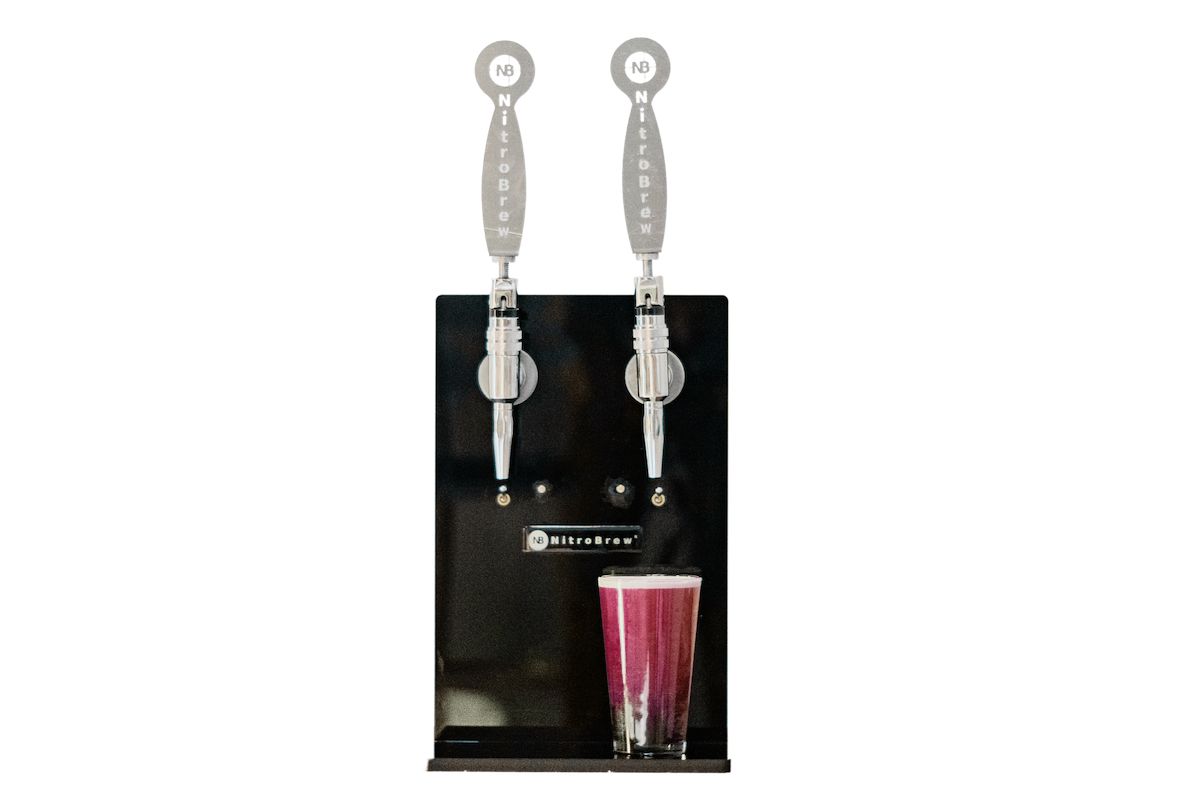
NitroBrew
Model: Tabletop system
Dimensions: 10-in.W x 11 1/2-in.D x 22 9/10-in.H*
Features: Choose from single or dual tap, and the option to dispense still and nitro beverages from the same tap. Adjust infusion adjustment for your desired beverage.
Website: nitrobrew.com
* All heights include tap handles.
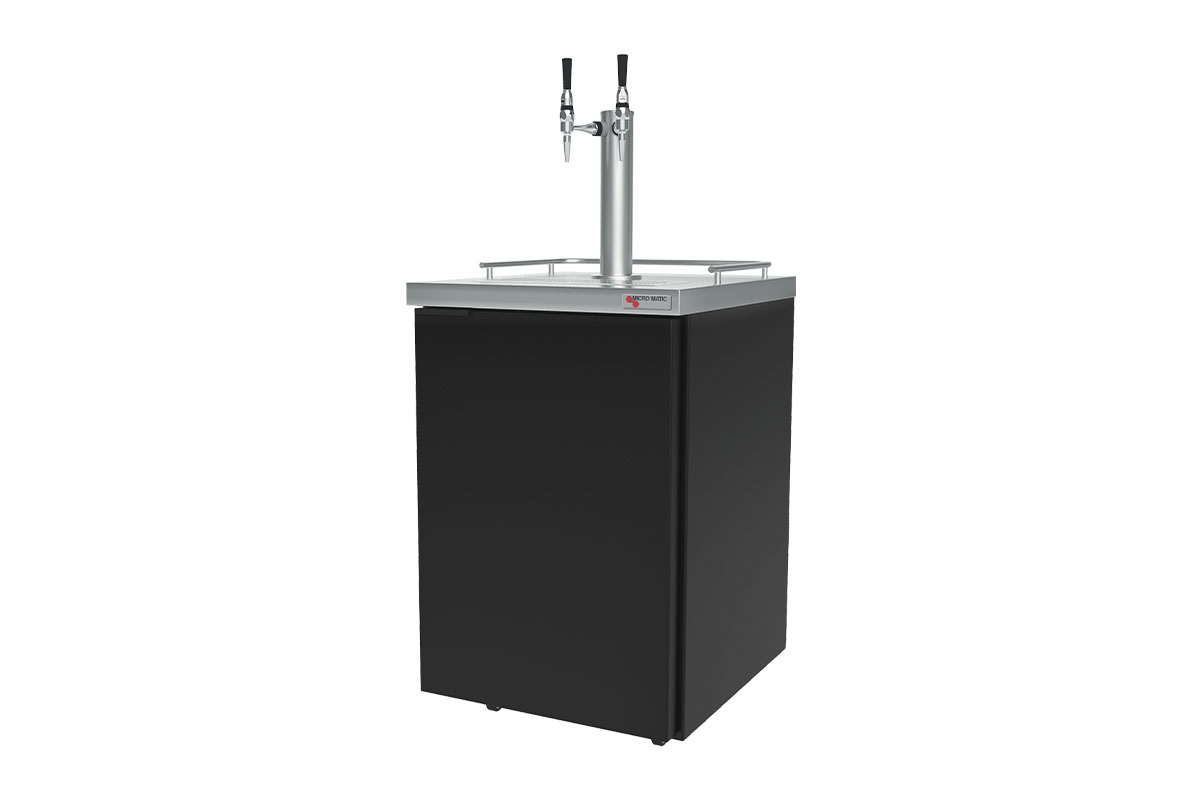
Micro Matic
Model: Americano
Dimensions: 25-in.W x 30 9/10-in.D x 52 1/2-in.H
Features: Dispense still or nitro cold brew coffee across two faucets, feeding from a keg, Cornelius keg or beverage tank. A digital thermostat displays cabinet temperature. Casters come standard.
Website: micromatic.com

Crysalli Beverage Systems
Model: ProFusion iN2-DD2P
Dimensions: 24-in.W x 30 1/8-in.D x 49 ¼-in.H
Features: Dispense nitrogenated, lightly carbonated or still beverages—all from the same keg—across two stainless taps. Custom tap handles are available.
Website: crysalli.com

Rotarex Solutions
Model: Coldfusion Duo
Dimensions: 79/10-in.W x 184/5-in.D x 233/5-in.H
Features: One tap dispenses still beverages from bibs, while the other adds nitrogen. The unit is compatible with an external gas source or an integrated air compressor. Mixing ratios can be adjusted from 1:4 to 1:30.
Website: rotarexsolutions.com
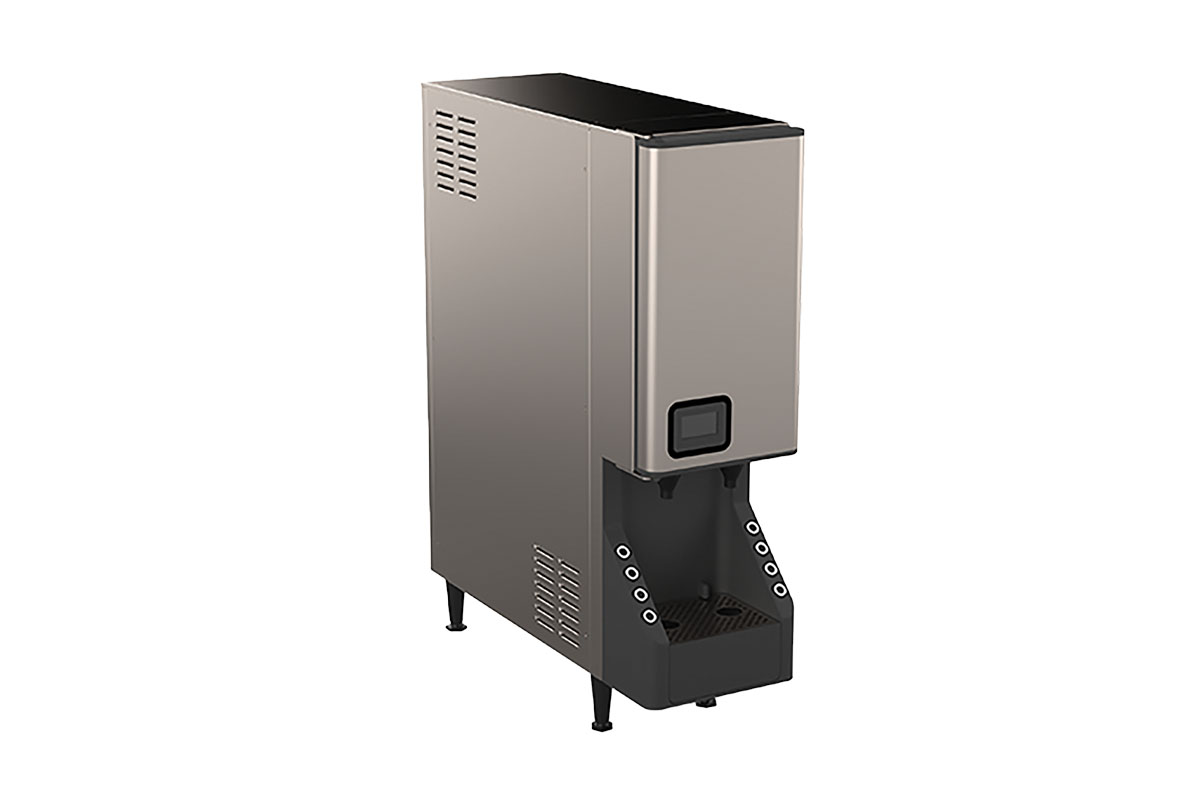
Wunder-Bar
Model: JoeTap countertop dispenser
Dimensions: 10-in.W x 28-in.D x 36-in.H
Features: Program up to three portions per beverage, or bypass presets with the manual pour button. The unit holds two 1-gal. bibs. Adjust beverage ratios electronically, and stay in the know on unit temperatures and cleaning information with the display screen.
Website: wunderbar.com

Perlick
Model: Mobile Tap, with nitro dispensing kit
Dimensions: 24-in.W x 24-in.D x 51-in.H (with casters; not pictured)
Features: Choose from single or dual infuser kits to offer nitro beverages, via refillable kegs, on up to two faucets. Components are made of 304 stainless for flavor quality. Quick release connectors ease labor when installing a new keg.
Website: perlick.com
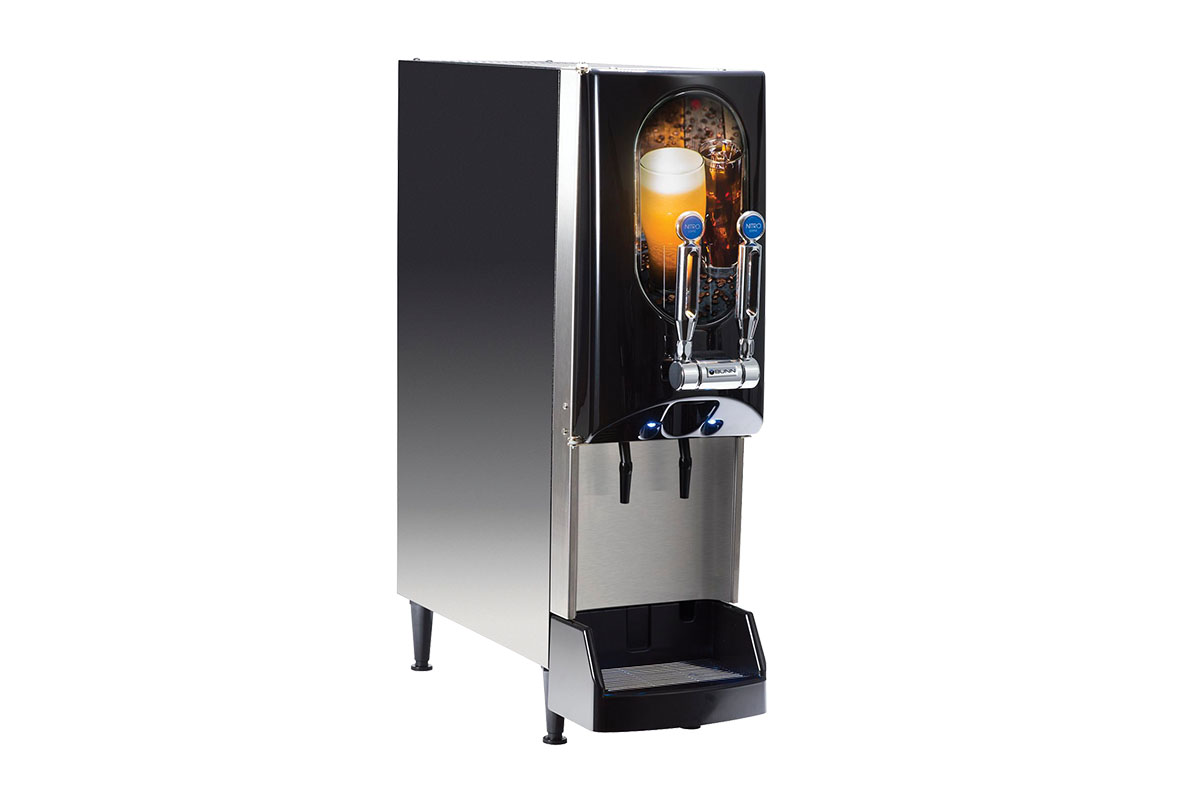
Bunn
Model: Nitron
Dimensions: 9 4/5-in.W x 29 4/5-in.D x 34-in.H
Features: Integrate two 1-gal. bibs or refillable containers, then promote what’s on tap via the unit’s graphic panel, which can be changed without tools. Dispense up to 60 16-oz. drinks an hour. A flashing red light signals when it’s time to swap out your nitrogen tank. Consider custom handles for a different look.
Website: commercial.bunn.com
RELATED CONTENT
- Advertisement -
- Advertisement -
- Advertisement -
TRENDING NOW
- Advertisement -
- Advertisement -
- Advertisement -


